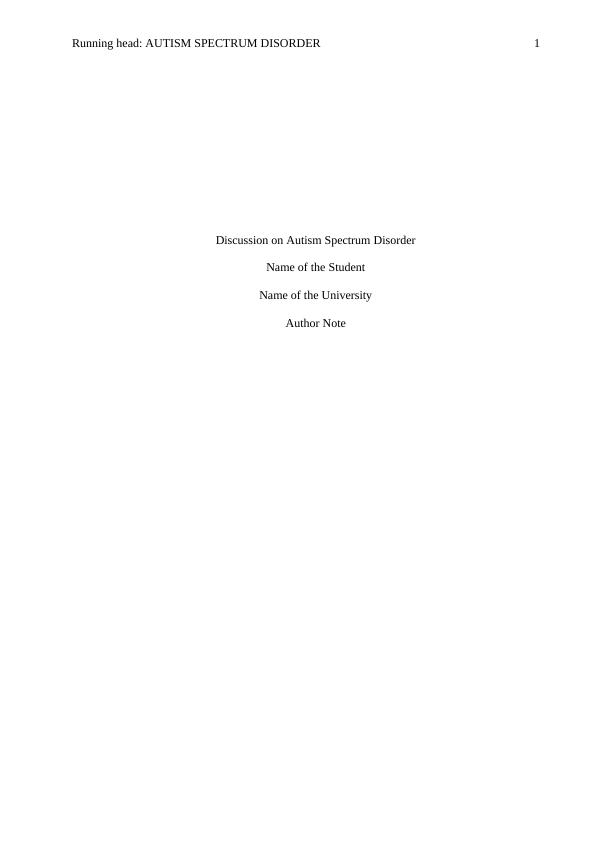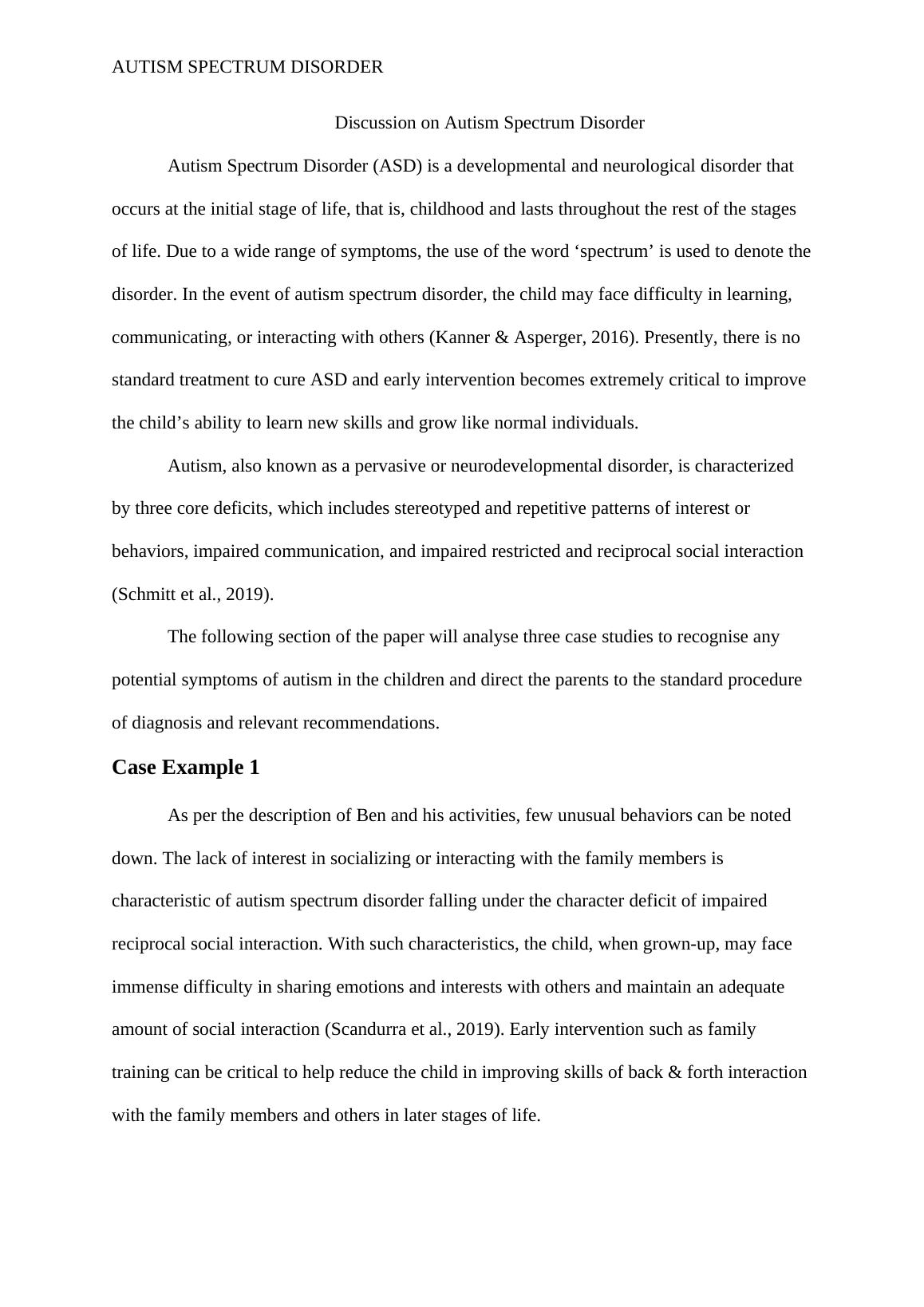Autism Spectrum Disorder Disease Analysis
Demonstrate understanding of the diagnostic criteria of ASD and the process of obtaining an ASD diagnosis through case examples.
4 Pages814 Words14 Views
Added on 2022-08-21
Autism Spectrum Disorder Disease Analysis
Demonstrate understanding of the diagnostic criteria of ASD and the process of obtaining an ASD diagnosis through case examples.
Added on 2022-08-21
ShareRelated Documents
End of preview
Want to access all the pages? Upload your documents or become a member.
Autism Spectrum Disorder - Historical Context, Diagnosis, Difficulties and Implications on Teaching and Learning
|6
|1297
|494
Social Skill Training for Improving Spoken Language in Children with Autism
|11
|2845
|49
Autism Spectrum Disorder: Symptoms, Diagnosis and Treatment
|12
|3017
|377
Music Therapy for Children with Autism Spectrum Disorder
|9
|2171
|465
Understanding Autism Disorder: Challenges and Solutions
|5
|614
|413
Levels Between Children with ADHD and Healthy Subjects
|13
|4681
|85


